Shoffan Saifullah
PSO-UNet: Particle Swarm-Optimized U-Net Framework for Precise Multimodal Brain Tumor Segmentation
Mar 24, 2025Abstract:Medical image segmentation, particularly for brain tumor analysis, demands precise and computationally efficient models due to the complexity of multimodal MRI datasets and diverse tumor morphologies. This study introduces PSO-UNet, which integrates Particle Swarm Optimization (PSO) with the U-Net architecture for dynamic hyperparameter optimization. Unlike traditional manual tuning or alternative optimization approaches, PSO effectively navigates complex hyperparameter search spaces, explicitly optimizing the number of filters, kernel size, and learning rate. PSO-UNet substantially enhances segmentation performance, achieving Dice Similarity Coefficients (DSC) of 0.9578 and 0.9523 and Intersection over Union (IoU) scores of 0.9194 and 0.9097 on the BraTS 2021 and Figshare datasets, respectively. Moreover, the method reduces computational complexity significantly, utilizing only 7.8 million parameters and executing in approximately 906 seconds, markedly faster than comparable U-Net-based frameworks. These outcomes underscore PSO-UNet's robust generalization capabilities across diverse MRI modalities and tumor classifications, emphasizing its clinical potential and clear advantages over conventional hyperparameter tuning methods. Future research will explore hybrid optimization strategies and validate the framework against other bio-inspired algorithms to enhance its robustness and scalability.
Comparative Analysis of Image Enhancement Techniques for Brain Tumor Segmentation: Contrast, Histogram, and Hybrid Approaches
Apr 08, 2024
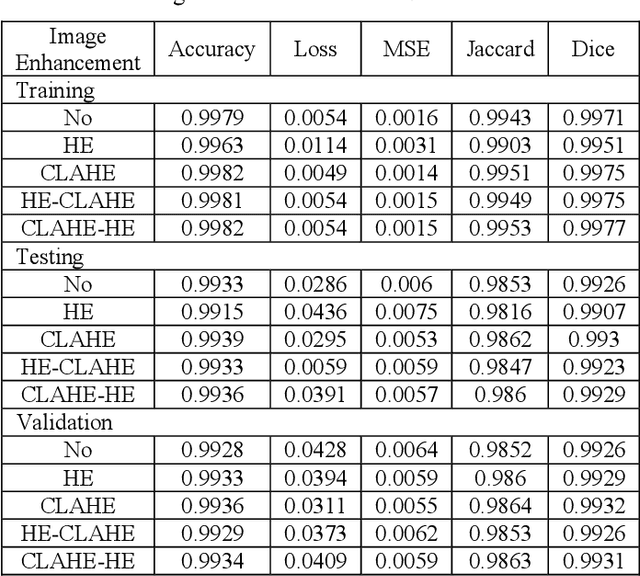

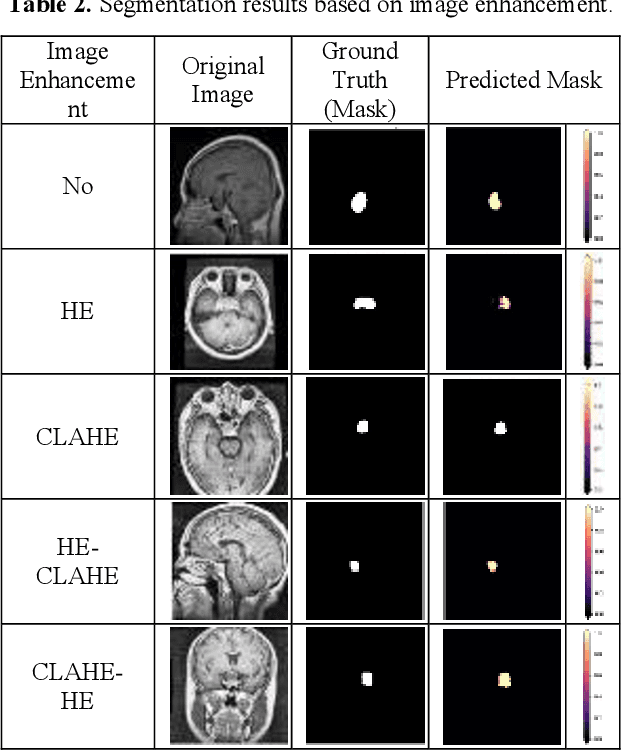
Abstract:This study systematically investigates the impact of image enhancement techniques on Convolutional Neural Network (CNN)-based Brain Tumor Segmentation, focusing on Histogram Equalization (HE), Contrast Limited Adaptive Histogram Equalization (CLAHE), and their hybrid variations. Employing the U-Net architecture on a dataset of 3064 Brain MRI images, the research delves into preprocessing steps, including resizing and enhancement, to optimize segmentation accuracy. A detailed analysis of the CNN-based U-Net architecture, training, and validation processes is provided. The comparative analysis, utilizing metrics such as Accuracy, Loss, MSE, IoU, and DSC, reveals that the hybrid approach CLAHE-HE consistently outperforms others. Results highlight its superior accuracy (0.9982, 0.9939, 0.9936 for training, testing, and validation, respectively) and robust segmentation overlap, with Jaccard values of 0.9862, 0.9847, and 0.9864, and Dice values of 0.993, 0.9923, and 0.9932 for the same phases, emphasizing its potential in neuro-oncological applications. The study concludes with a call for refinement in segmentation methodologies to further enhance diagnostic precision and treatment planning in neuro-oncology.
* 9 Pages, & Figures, 2 Tables, International Conference on Computer Science Electronics and Information (ICCSEI 2023)
Nondestructive chicken egg fertility detection using CNN-transfer learning algorithms
Sep 28, 2023Abstract:This study explored the application of CNN-Transfer Learning for nondestructive chicken egg fertility detection for precision poultry hatchery practices. Four models, VGG16, ResNet50, InceptionNet, and MobileNet, were trained and evaluated on a dataset (200 single egg images) using augmented images (rotation, flip, scale, translation, and reflection). Although the training results demonstrated that all models achieved high accuracy, indicating their ability to accurately learn and classify chicken eggs' fertility state, when evaluated on the testing set, variations in accuracy and performance were observed. InceptionNet exhibited the best overall performance, accurately classifying fertile and non-fertile eggs. It demonstrated excellent performance in both training and testing sets in all parameters of the evaluation metrics. In testing set, it achieved an accuracy of 0.98, a sensitivity of 1 for detecting fertile eggs, and a specificity of 0.96 for identifying non-fertile eggs. The higher performance is attributed to its unique architecture efficiently capturing features at different scales leading to improved accuracy and robustness. Further optimization and fine-tuning of the models might necessary to address the limitations in accurately detecting fertile and non-fertile eggs in case of other models. This study highlighted the potential of CNN-Transfer Learning for nondestructive fertility detection and emphasizes the need for further research to enhance the models' capabilities and ensure accurate classification.
* 18 pages, 9 figures, 1 table, journal article published
Identification of chicken egg fertility using SVM classifier based on first-order statistical feature extraction
Jan 10, 2022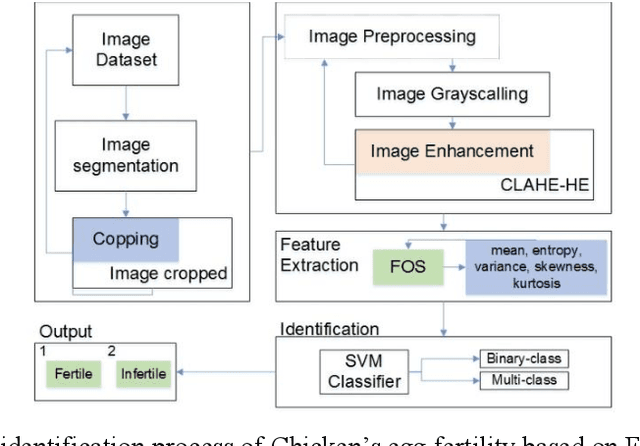
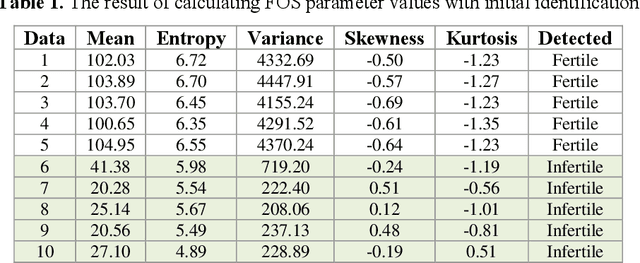


Abstract:This study aims to identify chicken eggs fertility using the support vector machine (SVM) classifier method. The classification basis used the first-order statistical (FOS) parameters as feature extraction in the identification process. This research was developed based on the process's identification process, which is still manual (conventional). Although currently there are many technologies in the identification process, they still need development. Thus, this research is one of the developments in the field of image processing technology. The sample data uses datasets from previous studies with a total of 100 egg images. The egg object in the image is a single object. From these data, the classification of each fertile and infertile egg is 50 image data. Chicken egg image data became input in image processing, with the initial process is segmentation. This initial segmentation aims to get the cropped image according to the object. The cropped image is repaired using image preprocessing with grayscaling and image enhancement methods. This method (image enhancement) used two combination methods: contrast limited adaptive histogram equalization (CLAHE) and histogram equalization (HE). The improved image becomes the input for feature extraction using the FOS method. The FOS uses five parameters, namely mean, entropy, variance, skewness, and kurtosis. The five parameters entered into the SVM classifier method to identify the fertility of chicken eggs. The results of these experiments, the method proposed in the identification process has a success percentage of 84.57%. Thus, the implementation of this method can be used as a reference for future research improvements. In addition, it may be possible to use a second-order feature extraction method to improve its accuracy and improve supervised learning for classification.
* 9 Pages, 5 Figures, 2 Tables
K-means Segmentation Based-on Lab Color Space for Embryo Egg Detection
Mar 03, 2021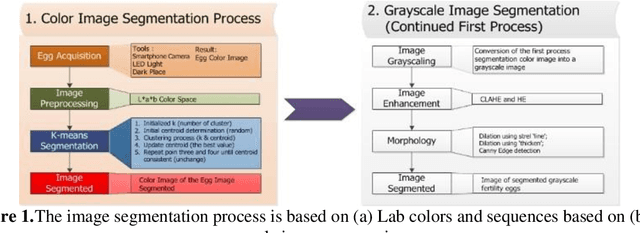
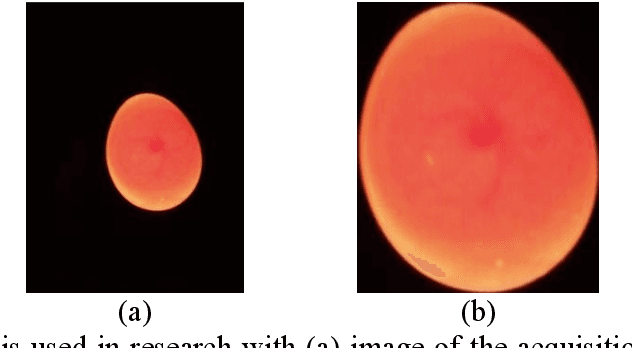


Abstract:The hatching process also influences the success of hatching eggs beside the initial egg factor. So that the results have a large percentage of hatching, it is necessary to check the development of the embryo at the beginning of the hatching. This process aims to sort eggs that have embryos to remain hatched until the end. Maximum checking is done the first week in the hatching period. This study aims to detect the presence of embryos in eggs. Detection of the existence of embryos is processed using segmentation. Egg images are segmented using the K-means algorithm based on Lab color images. The results of the images acquisition are converted into Lab color space images. The results of Lab color space images are processed using K-means for each color. The K-means process uses cluster k=3, where this cluster divided the image into three parts, namely background, eggs, and yolk eggs. Yolk eggs are part of eggs that have embryonic characteristics. This study applies the concept of color in the initial segmentation and grayscale in the final stages. The results of the initial phase show that the image segmentation results using k-means clustering based on Lab color space provide a grouping of three parts. At the grayscale image processing stage, the results of color image segmentation are processed with grayscaling, image enhancement, and morphology. Thus, it seems clear that the yolk segmented shows the presence of egg embryos. Based on this process and results, K-means segmentation based on Lab color space can be used for the initial stages of the embryo detection process. The evaluation uses MSE and MSSIM, with values of 0.0486 and 0.9979; this can be used as a reference that the results obtained can indicate the detection of embryos in egg yolk.
Segmentasi Citra Menggunakan Metode Watershed Transform Berdasarkan Image Enhancement Dalam Mendeteksi Embrio Telur
Feb 08, 2021Abstract:Image processing can be applied in the detection of egg embryos. The egg embryos detection is processed using a segmentation process. The segmentation divides the image according to the area that is divided. This process requires improvement of the image that is processed to obtain optimal results. This study will analyze the detection of egg embryos based on image processing with image enhancement and the concept of segmentation using the watershed method. Image enhancement in preprocessing in image improvement uses a combination of Contrast Limited Adaptive Histogram Equalization (CLAHE) and Histogram Equalization (HE) methods. The grayscale egg image is corrected using the CLAHE method, and the results are reprocessed using HE. The image improvement results show that the CLAHE-HE combination method gives a clear picture of the object area of the egg image that has an embryo. The segmentation process using image conversion to black and white image and watershed segmentation can clearly show the object of a chicken egg that has an embryo. The results of segmentation can divide the area of the egg having embryos in a real and accurate way with a percentage \approx 98\%.
* 8 pages, 6 figures
Comparison of Machine Learning for Sentiment Analysis in Detecting Anxiety Based on Social Media Data
Jan 16, 2021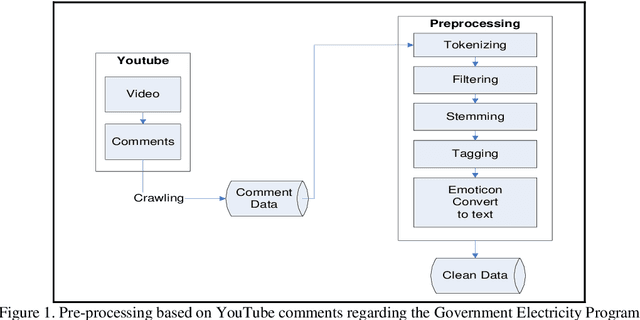
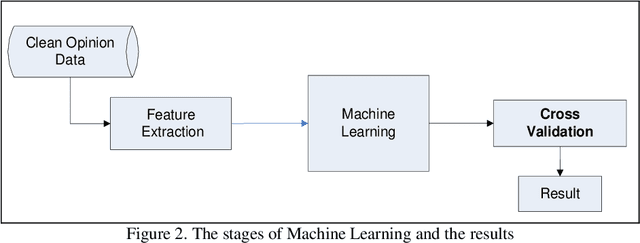
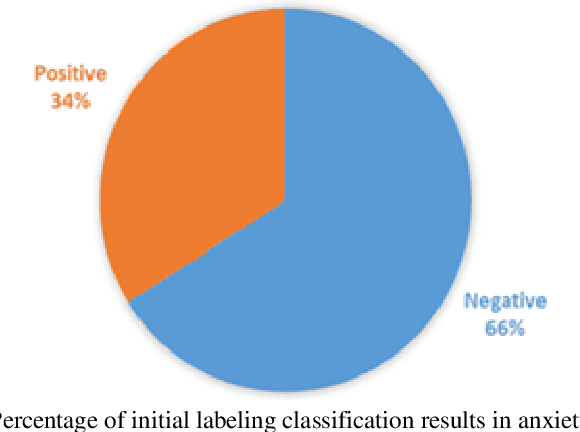
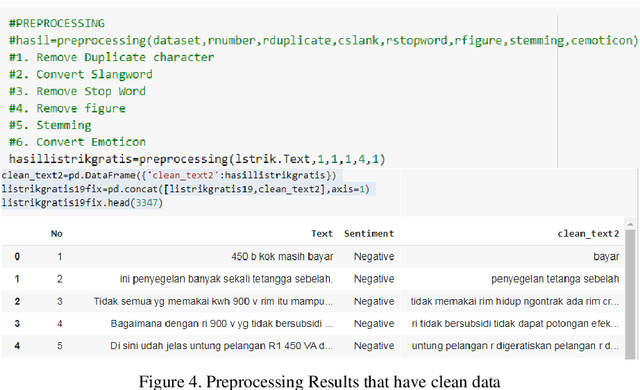
Abstract:All groups of people felt the impact of the COVID-19 pandemic. This situation triggers anxiety, which is bad for everyone. The government's role is very influential in solving these problems with its work program. It also has many pros and cons that cause public anxiety. For that, it is necessary to detect anxiety to improve government programs that can increase public expectations. This study applies machine learning to detecting anxiety based on social media comments regarding government programs to deal with this pandemic. This concept will adopt a sentiment analysis in detecting anxiety based on positive and negative comments from netizens. The machine learning methods implemented include K-NN, Bernoulli, Decision Tree Classifier, Support Vector Classifier, Random Forest, and XG-boost. The data sample used is the result of crawling YouTube comments. The data used amounted to 4862 comments consisting of negative and positive data with 3211 and 1651. Negative data identify anxiety, while positive data identifies hope (not anxious). Machine learning is processed based on feature extraction of count-vectorization and TF-IDF. The results showed that the sentiment data amounted to 3889 and 973 in testing, and training with the greatest accuracy was the random forest with feature extraction of vectorization count and TF-IDF of 84.99% and 82.63%, respectively. The best precision test is K-NN, while the best recall is XG-Boost. Thus, Random Forest is the best accurate to detect someone's anxiety based-on data from social media.
Fish Detection Using Morphological Approach Based-on K-Means Segmentation
Jan 16, 2021



Abstract:Image segmentation is a concept that is often used for object detection. This detection has difficulty detecting objects with backgrounds that have many colors and even have a color similar to the object being detected. This study aims to detect fish using segmentation, namely segmenting fish images using k-means clustering. The segmentation process is processed by improving the image first. The initial process is preprocessing to improve the image. Preprocessing is done twice, before segmentation using k-means and after. Preprocessing stage 1 using resize and reshape. Whereas after k-means is the contrast-limited adaptive histogram equalization. Preprocessing results are segmented using k-means clustering. The K-means concept classifies images using segments between the object and the background (using k = 8). The final step is the morphological process with open and close operations to obtain fish contours using black and white images based on grayscale images from color images. Based on the experimental results, the process can run well, with the ssim value close to 1, which means that image information does not change. Processed objects provide a clear picture of fish objects so that this k-means segmentation can help detect fish objects.
 Add to Chrome
Add to Chrome Add to Firefox
Add to Firefox Add to Edge
Add to Edge